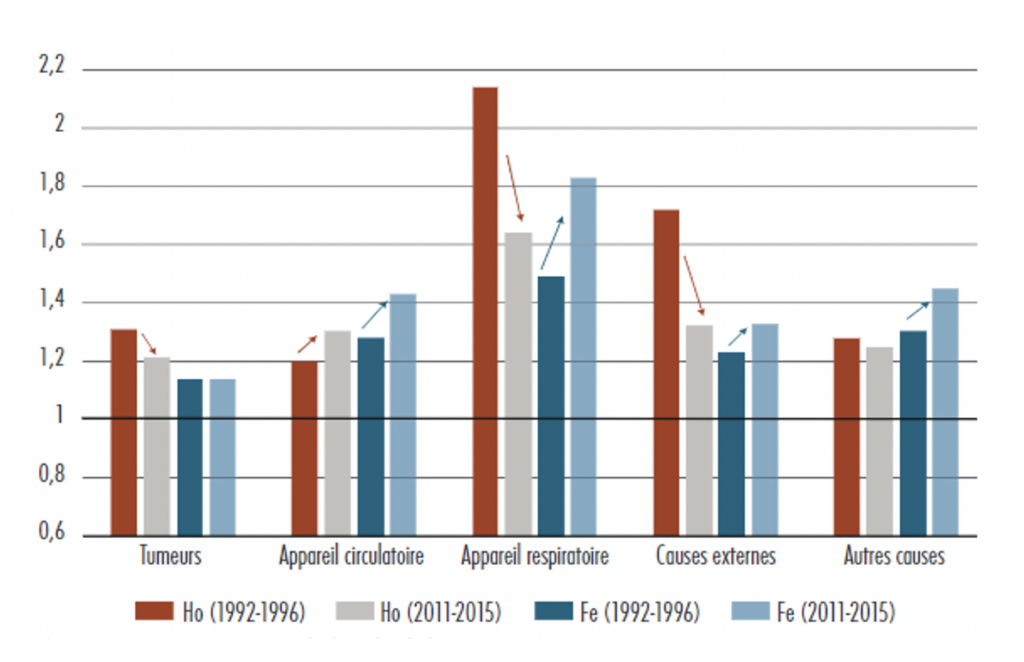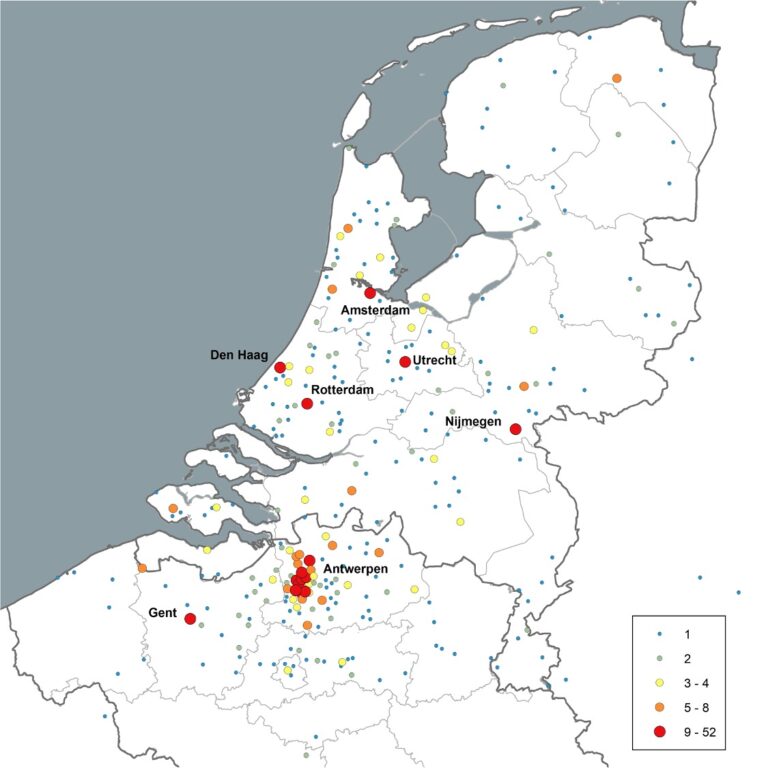Social inequalities in mortality beyond the age of 65 are an important issue in the current context of population aging, increased life expectancy, and policies aimed at extending the legal retirement age.
The authors asked three questions:
- Do social inequalities in cause-specific mortality, which are substantial at active ages, continue at old age?
- How have these inequalities evolved over the last decades?
- What is the role of (subjective) health status on social inequalities in mortality in old age?
The authors used a dataset linking information from the National Register (1991-2016) with the population censuses from 1991, 2001, and 2011 population censuses. They calculated mortality rates by social group and subjective health status and subsequently used logistic regression models.
Their analysis shows that the extent of social inequalities in mortality varied by cause-of-death group: they were quite low for cancer, but were very high for diseases of the respiratory system.
In 1992-1996, social inequalities were higher for all causes of death among men, compared to women, with the exception of diseases of the circulatory system (the main cause of death). This was no longer the case in 2011-2015 when inequalities were more marked among women: this applies to diseases of the circulatory system, of the respiratory system, external causes of death, and other causes, whereas they remained stable for cancer. In short, there was a reduction in social inequalities in cause-specific mortality among men, but an increase in the same inequalities among women.

The results show that social inequalities in the face of death beyond the age of 65 are significant and have even increased over the last 25 years. Controlling for health status, mortality inequalities between social groups remain but vary in magnitude along the social gradient. The elderly therefore need special attention, not only because they are inherently more fragile, but also because their numbers are increasing. This is a major current and future public health challenge.
Reference: Eggerickx T, Sanderson J-P., Christophe V., Cécile Donadille. ‘Inégalités sociales de mortalité au-delà de 65 ans. Le cas de la Belgique.’ Revue Quetelet Journal, Vol. 9, no. 1: 101-125.
DOI: https://doi.org/10.14428/rqj2021.09.01.05
Link to the article: https://ojs.uclouvain.be/index.php/Quetelet/article/view/58963/67453


